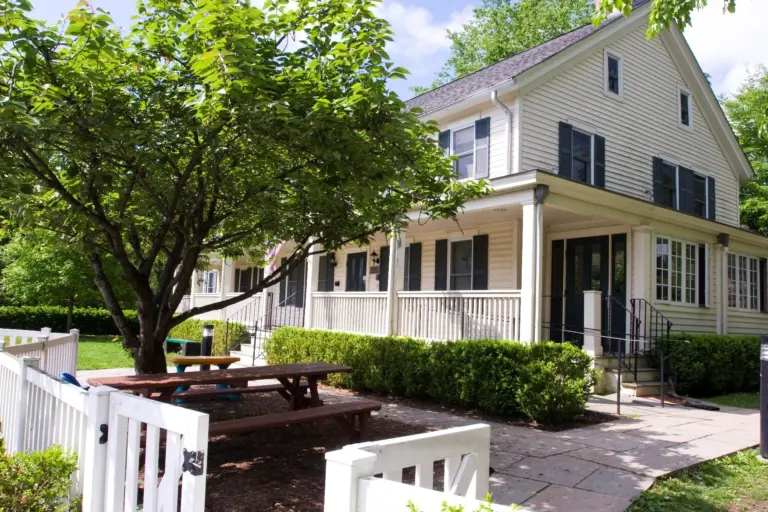By Edward Horstmann
Edward Hicks was born in 1780, in Bucks County, Pennsylvania. Sadly, his mother died when he was eighteen months old, and so impoverished was his household that his father had to ask neighbors, David and Elizabeth Twining, to care for his young child. The Twinings were Quakers and, on a more personal note, ancestors of mine through my mother’s side of the family.
As Edward grew older, he showed interest in becoming a painter, though his community of faith did not support that ambition. Quakers were not drawn to adornment: simplicity and utility were the watchwords of their faith. But the longing to express oneself artistically will often find a way through resistance. So Hicks began to use his artistic passion to paint commercial signs and household objects.
Then came a time when he used his skill to preach; not with words, but paint. Inspired by the vision of a biblical poet named Isaiah, who imagined a world where enemies would overcome their hatred and live alongside one another in peace, Edward Hicks created a series of paintings called The Peaceable Kingdom. He made at least sixty-two versions of this theme and there may be more that have yet to surface.
These paintings tend to look very much the same. They include the depiction of a tree that has been snapped off, as if by a violent wind. For Hicks it was a symbol of the brokenness that can be found in the world; the result of human brutality. But this wrecked tree may also have been a symbol of hope, as when the shoot of a new tree will arise from the ruin of an old stump. Elsewhere in the paintings, Hicks showed domesticated animals alongside wild animals and grass eaters alongside meat eaters, lounging together, and no one looking nervous. In the center of these paintings, he included a child. The presence of this young person was a tribute to Isaiah, who imagined a world where “the wolf shall live with the lamb, the leopard shall lie down with the kid, the calf and the lion and the fatling together, and a little child shall lead them.”
In many of Hicks’s paintings the characters depicted in them are presented so that they are looking directly at the viewer. As if that tree is asking whether we have had some experience of brokenness that needs the healing touch of God. Those animals, so different from one another, seem to be saying: “If we can live together, why can’t you?” Then there is the child, looking right at us, questioning: “What matters most? Personal kingdoms created primarily for our own benefit or beloved communities where all can flourish in peace?”
In Hicks’s paintings, he was persuading and pleading: lower the barriers of distrust and give peace a chance. For him, in the words of Emily Dickinson, faith is a “long obedience in the same direction.” That is why he painted The Peaceable Kingdom at least sixty-two times. In every painting he was saying yes to hope, and no to despair. And this was not easy to do. Over time he harbored doubts that unity and harmony could ever prevail in the world. Yet he kept painting The Peaceable Kingdom. Maybe he painted because it was the only way he could keep his faith alive.
Through his passion for peace and creativity Hicks offers a question to each new generation: what matters most to us? I do not believe this is a question that can be answered with the help of AI or from information available on a cell phone. As wonderful as those tools may be in the service of humankind, the question of what matters most brings us face to face with ourselves-and God. What is our highest hope for humanity and what role can we play, individually and collectively, to make sure that future generations can flourish on planet earth? These questions require a certain stillness for exploration. We will know what matters most to us when there is clarity and clarity needs time and space for wonder, prayer and listening.
When Jesus was a young man and preached his first public sermon, he was clear about what mattered most to him: “The Spirit of the Lord is upon me,” he said, “because he has anointed me to bring good news to the poor.” I believe he came to that faith by way of time spent in solitude, where the Spirit opened before him a way of love and peace. The connection that mattered most to him throughout his lifetime was his connection with that essential intangible of the Spirit. That relationship gave him guidance and provided the strength to care for those who were loved least of all.
The Spirit of the Lord is upon all of us. These are words of faith that can bring us close to the God of life, fill us with hope for the future, and strengthen us to care for the miracle of planet earth. It is the core of a vision for people who know what matters most.
The Rev. Dr. Ed Horstmann has been the Senior Pastor of Round Hill Community Church in the back country of Greenwich for eleven years. He is an artist, writer, and advocate for creation care, and he and Susan, his wife, share their life with a mighty Miniature Schnauzer named Dot.




